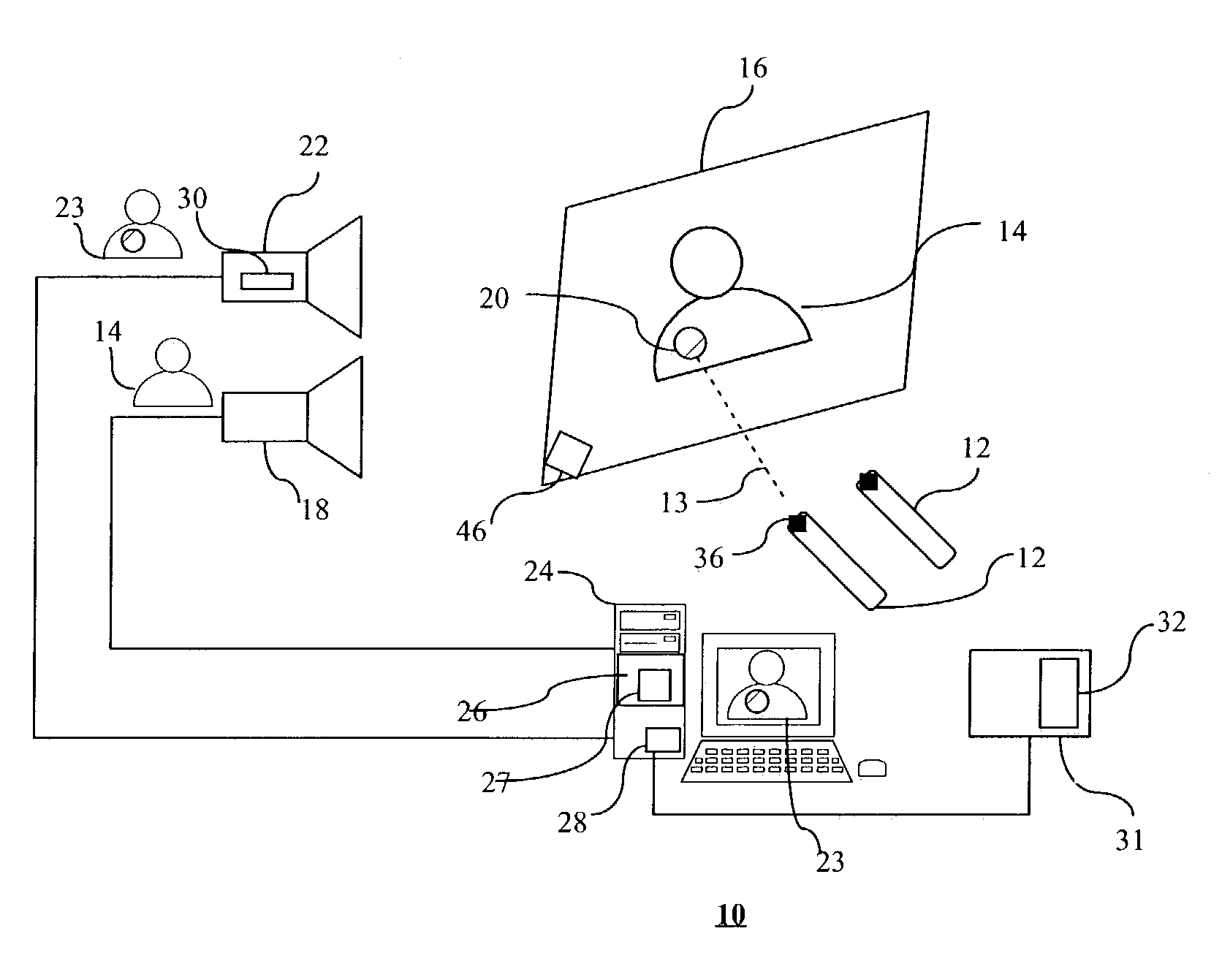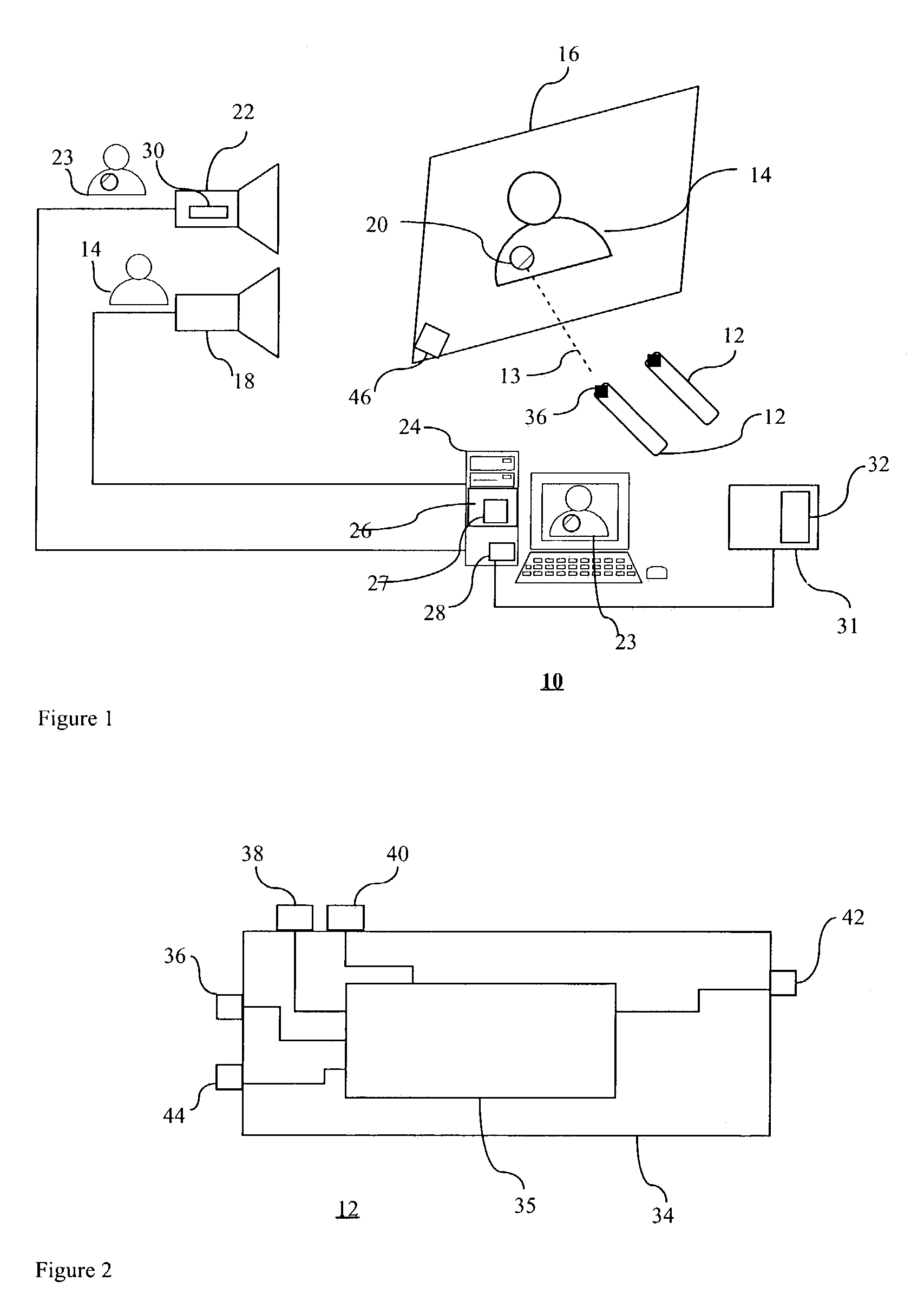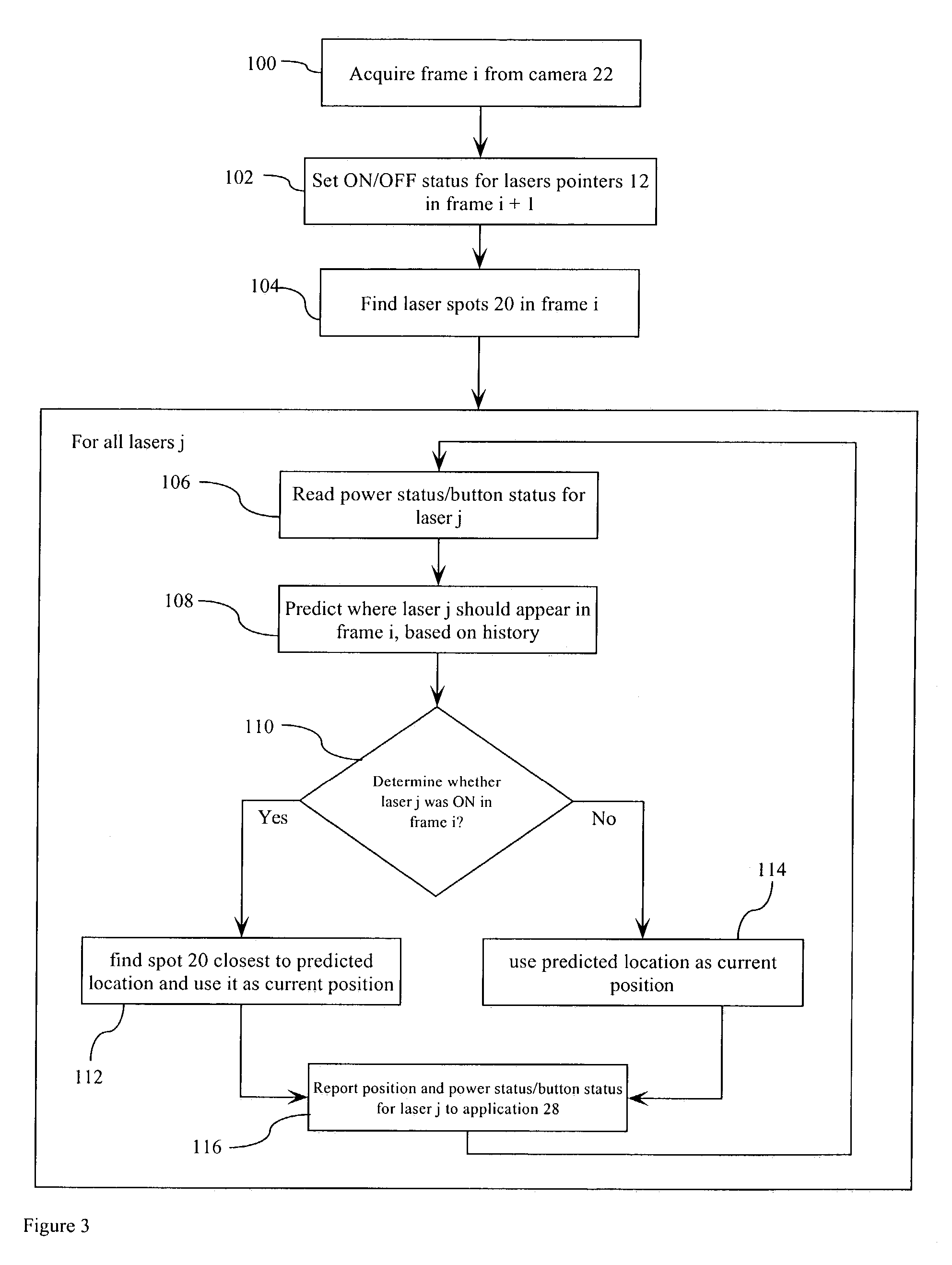Collaborative pointing devices
- Summary
- Abstract
- Description
- Claims
- Application Information
AI Technical Summary
Benefits of technology
Problems solved by technology
Method used
Image
Examples
Embodiment Construction
[0033]Reference is first made to FIG. 1, which is an overview of a system 10 for implementing a method for allowing a plurality of input devices 12 to interact with a displayed image 14 on a screen or display 16. The image 14 is projected onto the display 16 by an image projector 18. Generally, the input devices 12 are laser pointers which include a laser that is relatively safe to users, such as a Class III A type laser. Each laser pointer 12 is caused to emit directional visible light or a laser beam 13 onto the display 16, which produces a visually recognizable laser spot 20 on the display 16.
[0034]The system 10 also includes a camera 22 for capturing successive images 14 on the display 16, to form captured images 23 thereof. The laser pointers 12, display 16 and projector 18, are coupled to a computer 24 which processes the captured images 23, and determines locations of laser spots 20 due to each laser pointer 12.
[0035]The computer 24 includes a processor 26 which receives capt...
PUM
 Login to View More
Login to View More Abstract
Description
Claims
Application Information
 Login to View More
Login to View More - R&D
- Intellectual Property
- Life Sciences
- Materials
- Tech Scout
- Unparalleled Data Quality
- Higher Quality Content
- 60% Fewer Hallucinations
Browse by: Latest US Patents, China's latest patents, Technical Efficacy Thesaurus, Application Domain, Technology Topic, Popular Technical Reports.
© 2025 PatSnap. All rights reserved.Legal|Privacy policy|Modern Slavery Act Transparency Statement|Sitemap|About US| Contact US: help@patsnap.com



